MARIANI’S
April
12, 2009
NEWSLETTER

Dim Sum Cart
~~~~~~~~~~~~~~~~~~~~~~~~~~~~~~~~~~~~~~~~~~
QUESTIONS? TO REACH JOHN MARIANI WRITE TO: newsletter@johnmariani.com.
ARCHIVE: Readers
may now access
an
Archive of all past newsletters--each annotated--dating back to July,
2003, by simply clicking on www.johnmariani.com/archive
SUBSCRIBE AND
UN-SUBSCRIBE: You may subscribe anyone you wish
to this newsletter--free of charge--by
clicking here.
TO
READ JOHN MARIANI'S ARTICLE ON DINING OUT IN PHOENIX AND SCOTTSDALE IN DIVERSION MAGAZINE, CLICK
HERE.
In
This Issue
SPRINGTIME
IN ROME by Mort Hochstein
A Few
Thoughts on Abruzzo by John Mariani
NOTES FROM THE WINE CELLAR: California pinots need a good night's rest by John Mariani
QUICK BYTES
~~~~~~~~~~~~~
La
Primavera
alla Romana
by Mort Hochstein
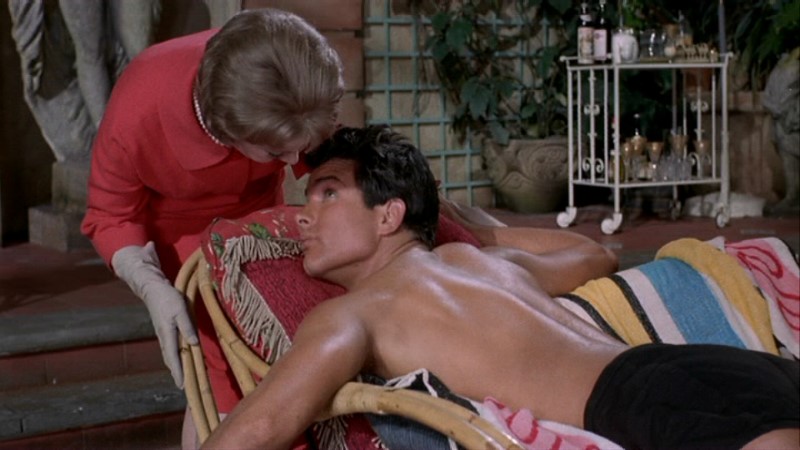 In the movie "The
Roman spring of
Mrs. Stone," based on Tennessee Williams' play, Vivien Leigh had more
on her mind, especially Paolo, played by a not-very-Italian-looking
Warren Beatty, than adventuresome eating. But when spring comes to
Rome, the Romans come feast on what the season brings to the
table--wild greens, zucchini flowers, and the famous abbacchio--baby lamb that feeds
on
the hillsides of Lazio, digesting the sweet mint of the region, an herb
that is used ubiquitously in Rome.
In the movie "The
Roman spring of
Mrs. Stone," based on Tennessee Williams' play, Vivien Leigh had more
on her mind, especially Paolo, played by a not-very-Italian-looking
Warren Beatty, than adventuresome eating. But when spring comes to
Rome, the Romans come feast on what the season brings to the
table--wild greens, zucchini flowers, and the famous abbacchio--baby lamb that feeds
on
the hillsides of Lazio, digesting the sweet mint of the region, an herb
that is used ubiquitously in Rome.
Mort Hochstein reports on
where to do so.
Jeffrey told
us we would enjoy Dal Pompiere
(38 Via Di S. Maria Del
Calderari; 668-8377), and since we always follow our internist’s
advice, we sought out his restaurant. If we had followed directions
from our hotel concierge just as religiously, our search might have
gone easier. Instead we got off our bus prematurely at Teatro
Marcello and wandered the back streets, asking questions in our
halting Italian, trying to keep the Synagogue, just off the
river Tiber, in sight, heading toward the large
square in the historic ghetto where this old-line Jewish
restaurant is located.
Rome’s ghetto embraces a four-block area, and on our
way we passed kosher meat markets and pizza shops, bakeries,
Hebraica stores and restaurants, men wearing skull caps and carrying
briefcases and families doing last-minute shopping. After several wrong
turns, we found ourselves in the Piazza delle Cinque Scole. We
spotted two workers in kitchen whites at a
doorway and turned our eyes upward to a second floor, which clearly was
a restaurant. The entrance, however, was not in the plaza but
down one last twisting alleyway.
We made our way upstairs and into an informal
dining area with wooden beam ceilings and a warren of tables. The
waiters looked as if they would be at home in a Brooklyn deli and
I half expected to hear a busy server warning “vatch, vatch,” as he rushed to
deliver an order. The diners all seemed to be regulars, heading
toward familiar tables as if in their own
homes. Our waiter, speaking restaurant English, interpreted the
menu and its tortured translation to us.
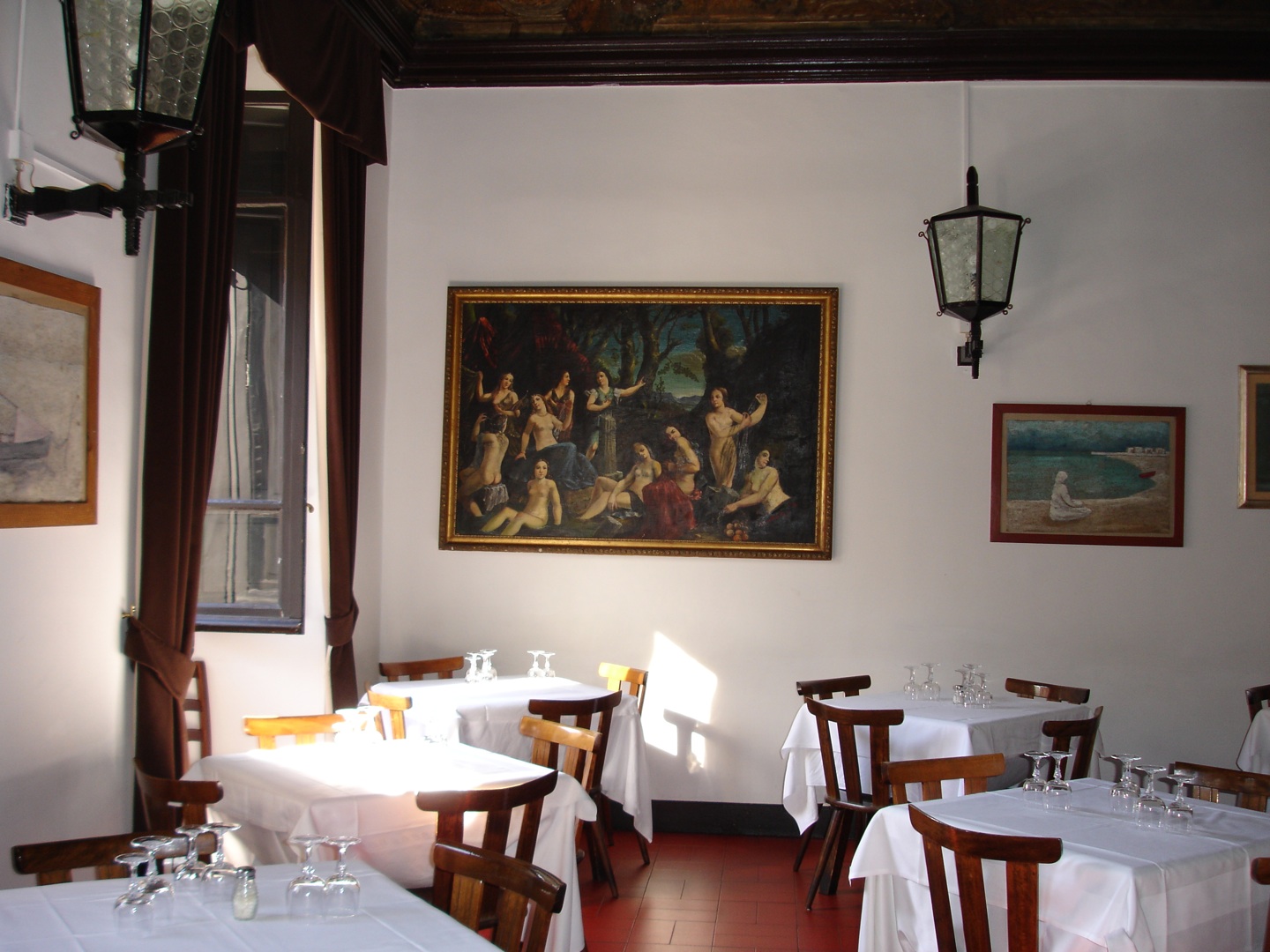 Except
for some unfamiliar items, it needed little explanation. We knew we
wanted traditional dishes, particularly carciofi alla Giudia (artichokes
Jewish style, below) and abbachio accompanied by puntarelle in salsa d’alici (chicory
salad with an anchovy sauce). We had other dishes in mind, too:
squash blossoms, fried zucchini flowers, and bucatini all’ amatriciana (thick
spaghetti in a sauce of peppery tomato and white
wine). Jeffrey had told us to look out for the sweet-and-sour
pasta and spaghetti alla carbonara and
the salt cod in batter, as well as the more familiar gnocchi. Some we
tried, some we had to defer for a future visit.
Except
for some unfamiliar items, it needed little explanation. We knew we
wanted traditional dishes, particularly carciofi alla Giudia (artichokes
Jewish style, below) and abbachio accompanied by puntarelle in salsa d’alici (chicory
salad with an anchovy sauce). We had other dishes in mind, too:
squash blossoms, fried zucchini flowers, and bucatini all’ amatriciana (thick
spaghetti in a sauce of peppery tomato and white
wine). Jeffrey had told us to look out for the sweet-and-sour
pasta and spaghetti alla carbonara and
the salt cod in batter, as well as the more familiar gnocchi. Some we
tried, some we had to defer for a future visit.
The artichokes lived up to our expectations. They
were a tasty reward for our efforts, their lacy leaves lightly
browned by a quick fry, crisp yet soft in the middle. The squash
blossoms and zucchini flowers were new for our grandson Matt, and he
took to them more easily than the tangy, slightly bitter chicory
salad.
It’s not often that I find animelle (sweetbreads) and cervello (brains) and while they
were paired in a fritto misto,
I opted for a plate of the sweetbreads,  crisp
on the outside, pillow soft and oh-so-tender once dented. We
added arancini (pea-filled
fried risotto balls), and the bucatini
all amatriciana before going on to the delicacy of the
evening, the baby lamb, which Jeffrey had so glowingly and
correctly recommended. We were almost sated, pairing our meal
with a local wine, Colle Piccioni, indigenous to
Lazio, red and lusty though simple.
crisp
on the outside, pillow soft and oh-so-tender once dented. We
added arancini (pea-filled
fried risotto balls), and the bucatini
all amatriciana before going on to the delicacy of the
evening, the baby lamb, which Jeffrey had so glowingly and
correctly recommended. We were almost sated, pairing our meal
with a local wine, Colle Piccioni, indigenous to
Lazio, red and lusty though simple.
There was a small cheese board and a plate of
mixed sherbets, which we shared along with sbrisolona, a traditional
Mantovan cake made from white flour,
cornmeal, almonds, sugar and eggs. Flaky and studded with
nuts, it is a treat to remember, as was our whole evening at Dal
Pompiere. The restaurant has been around a long time, has gone through
several generations of owners and will probably still be there,
serving carciofi
and animelle and abbachio to Romans and tourists as
long as the coliseum stands.
Dal Pompiere is open Mon.-Sat.
for dinner.
Normally, I’m happy to see a crowd in front of a restaurant
where I am making my first visit. It vindicates my gamble on an
untested dining choice. But I’m also wary of a
crowd and when I turned the corner at Piazza della Coppelle (below) in Rome recently
and saw a throng of young Italians outside of Coco (Piazza delle Coppelle 54; 813-
6545), I was concerned that the place would be
overcrowded and the din too much for comfortable dining. Fortunately,
as we got closer, we saw that all the happy imbibers were a
standup crowd taking
advantage of a generous Sunday night Happy Hour-and-dining
promotion. Our table would be sheltered
from any commotion.
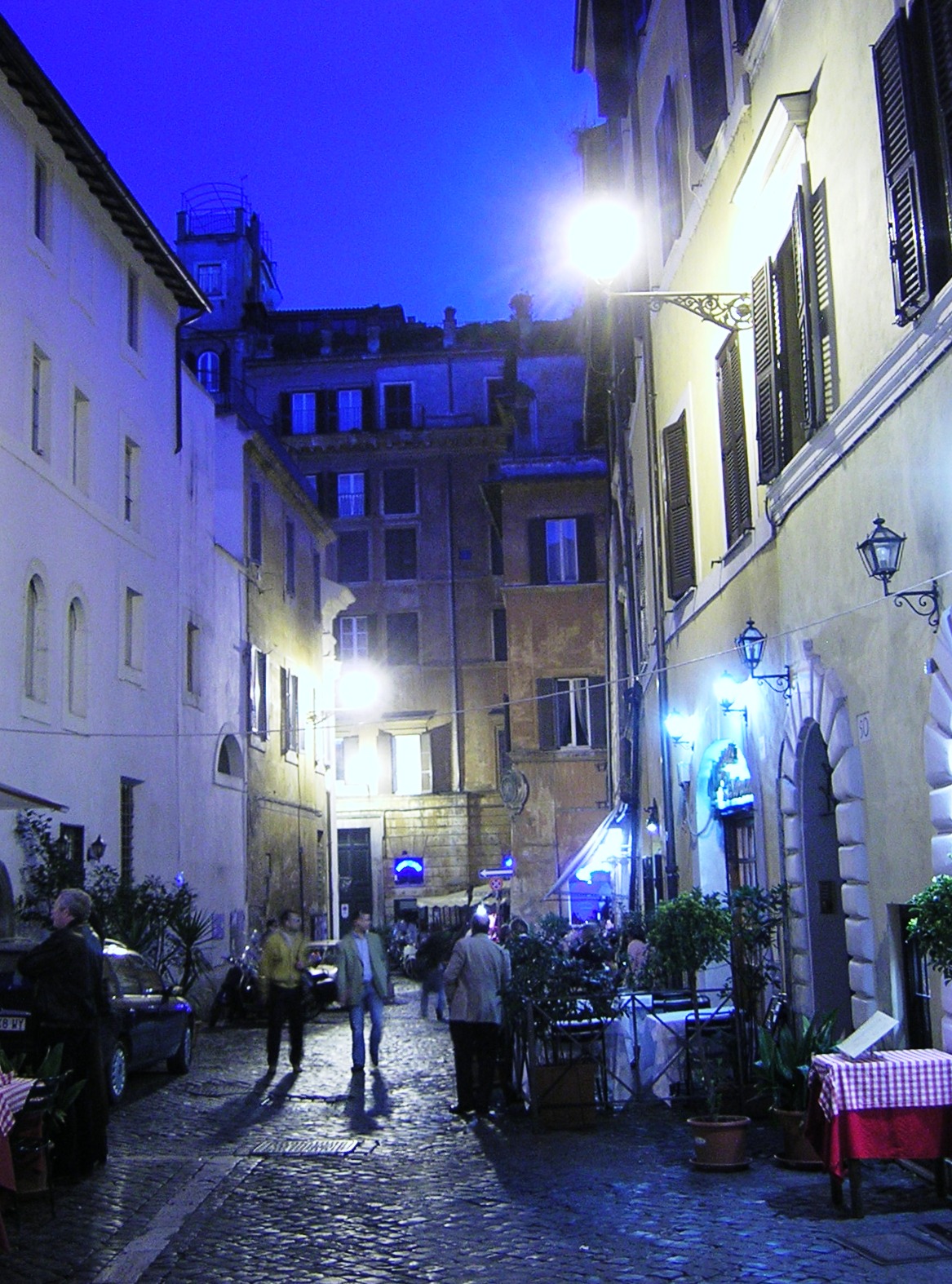 On that warm night in Rome, our grandson Matthew had urged
us to visit Coco, where one of his fellow students, Simone, worked as a
waiter. Matt, who seemed expert in the backstreets of Rome, guided us
through a series of twisting and turning alleys fanning out from the
Pantheon, assuring us at each turn that Coco was just around the
corner. And finally, we rounded the right corner to see all those
people overflowing the front of the restaurant.
On that warm night in Rome, our grandson Matthew had urged
us to visit Coco, where one of his fellow students, Simone, worked as a
waiter. Matt, who seemed expert in the backstreets of Rome, guided us
through a series of twisting and turning alleys fanning out from the
Pantheon, assuring us at each turn that Coco was just around the
corner. And finally, we rounded the right corner to see all those
people overflowing the front of the restaurant.
It was a warm Roman night and we dined outside under
giant white umbrellas and heat lamps, which were not needed. Simone
helped with language problems, putting us onto a savory melanzana (eggplant) pie with
buffalo mozzarella for Matt, spicy, fleshy grilled polipo (octopus) with parslied
small potatoes for me, and a caprese salad of fresh mozzarella, basil
and tomatoes lightly dressed with a good extra virgin olive oil, for my
wife Rollie.
With Simone acting as our personal shopper,
the going could not have been more rewarding. Matt’s pasta course was a
mound of small, pillowy green gnocchi
stuffed with salmon and taleggio
cheese, lighter and tastier than any I’d ever had; those
enticing small bites which Matt generously shared,
justified all the questioning, uncertain twists and turns that brought
us to Coco.
Rollie chose tagliolini all'arrabiata (below),
with
a peppery fresh tomato sauce studded with pancetta washing over the
pasta, setting off a cloud-like ricotta cheese. I went for rigatoni alla grecia, Greek-style
pasta, sauced with guanciale
bacon, which added a sweet taste, white wine, and pecorino cheese. Our
wine was a rustic Nero d’avola from Sicily, typical of that regional
grape with powerful black fruit flavors strong enough for the spiciest
of sauces.
The portions were generous but impossible to leave
unfinished. I felt we let Simone down when the three of us pleaded
that we really couldn’t handle a main course. We had
to shake our heads unwaveringly as Simone urged us to try a
Catalana-style salmon, which we had eyed at an adjoining table;
Livornese squid, also at a nearby table where several diners were
sharing a small mountain of that seaside specialty; and
beef strips with gorgonzola cheese, that last sounding enticing as
Simone extolled the taste of tender beef contrasting with the
sharp, rich cheese.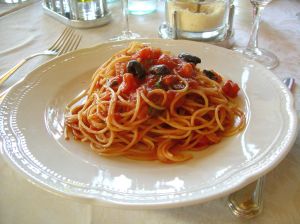
No, too good and too much!, we protested, overruling his
suggestions.
We compensated by trying a variety of desserts. Rollie would
walk a mile for sfogliatelle,
so that flaky, multi-layered pastry was an easy decision for
her. I opted, happily, for a lush ricotta cheese cake with cherry jam,
and Matt chose a panna cotta with
berries and cherries. There were few crumbs left on any plates when we
finished. Simone declared
we were buon gustai (good
eaters) and urged us to return some day for the piatto
principale(main course) at Coco.
The restaurant was a discovery for us and we
will return some day if
we can find our way to the piazza.
Coco is open daily for lunch and dinner.
Mort Hochstein, former
editor and producer for NBC News and the Today Show, and former
managing editor of Nation's Restaurant News, writes on wine, food
and travel for Wine Spectator, Wine Business Monthly, Saveur and
other food and wine publications.
A Few Thoughts on Abruzzo by John Mariani
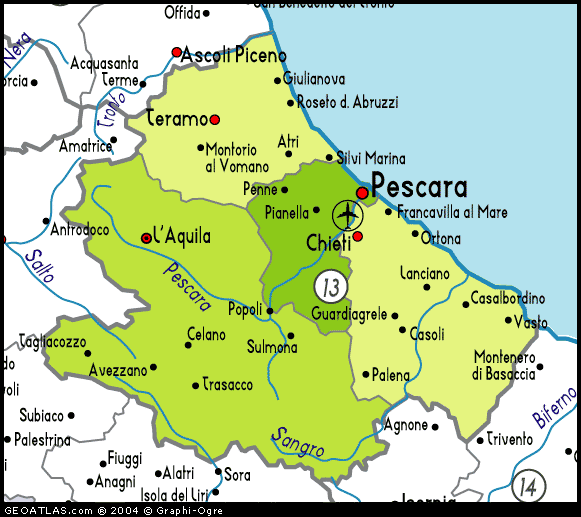 As
the reports and photos come in showing the devastation wrought by
earthquakes in Italy's Abruzzo, I am particularly saddened by what I
see because that is the region my father's people came from at the turn
of the 19th century to settle in New York. Theirs was a town called
Vasto, perched above the Adriatic, a fishing village that was as poor
as any in Italy at that time, so, like millions of other southern
Italians, my grandfather and grandmother came to the United States for
a new life that materialized very quickly.
As
the reports and photos come in showing the devastation wrought by
earthquakes in Italy's Abruzzo, I am particularly saddened by what I
see because that is the region my father's people came from at the turn
of the 19th century to settle in New York. Theirs was a town called
Vasto, perched above the Adriatic, a fishing village that was as poor
as any in Italy at that time, so, like millions of other southern
Italians, my grandfather and grandmother came to the United States for
a new life that materialized very quickly.Today Vasto has become quite a resort town, very popular in summer with Germans and English tourists who come for the beach and the loveliness of the hillside location, the broad piazzas, the little churches, and a small garden that has a curious stone monument to my grandmother's family, the DelGuercios, who apprently aided the town after establishing themselves successfully in America.
I have not heard any news of Vasto being affected by the earthquake, but my heart grieves for those who have suffered so much in the area around the beautiful city of L'Aquila, the provincial capital, set within the glorious valley called the Gran Sasso. Long the region's historic and artistic center, with its own University, Musical Conservatory, Arts Academy, Theater and Concert Society, National Museum of the Abruzzi, and the famed Salvatore Tommasi library, L'Aquila is home to unique monuments that include the Fountain of the 99 Spouts, the 13th Century pink-and-white marble church Santa Maria di Collemaggio (which I don't believe has suffered damage), and the severely damaged Santa Maria del Suffragio on the Piazza del Dumo. It is a wonderful walking city, teeming with young people, with a few pleasant trattorias serving the chile-pepper spiked dishes of Abruzzo and its most famous pasta, spaghetti all ghitarra.
My faith in the people of Abruzzo (once called Abruzzi, because it encompassed two provinces, the other being Molise), if not in the government, to restore their beautiful city is abiding. After all, L'Aquila, which means "The Eagle," was destroyed in 1259 by conquest, became a powerful and wealthy city that attracted successive contenders to battle over its domination, was again destroyed in the 16th century, this time by the Spanish, was twice sacked by the French, and, in 1703 destroyed by an earthquake--one of several dating to 1349, 1452, 1501, and 1646. The Abruzzese have seen it all before and not only survived by come back to vibrant life in an effort to preserve not only the beauty of their province, nestled in mountains and pine forests, but their ancient culture and bloodlines that go back ancient Roman times.
For those who wish to contribute to the revitalization of Abruzzo go to The National Italian American Foundation's NIAF/Abruzzo Relief Fund for information.
~~~~~~~~~~~~~~~~~~~~~~~~~~~~~~~~~~~~
NEW
YORK CORNER
by John Mariani
onda
229 Front Street (near Peck Slip)
212-513-0770
www.ondanyc.com
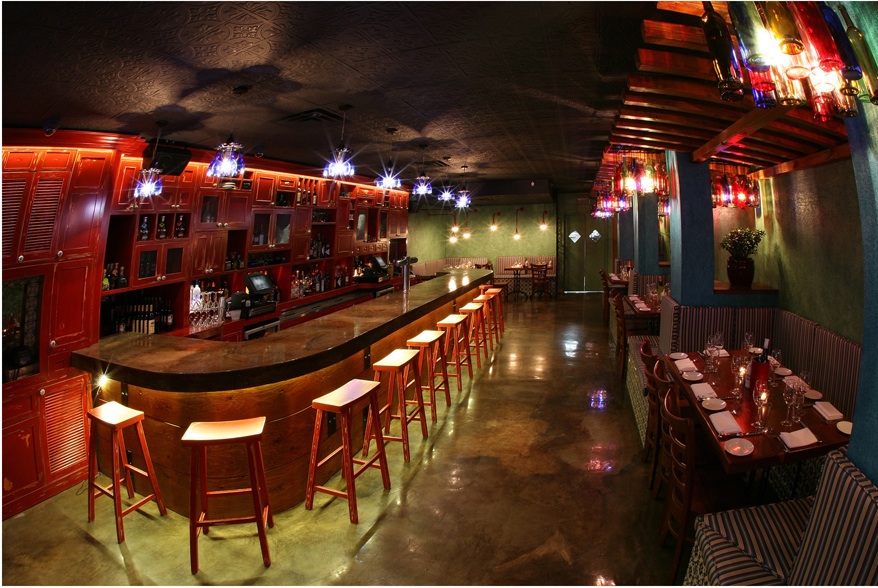 Idon't think I've ever set foot
on Front Street, which has got to be one of the smallest in Manhattan,
wedged between Peck Slip and the South Street Seaport.
Idon't think I've ever set foot
on Front Street, which has got to be one of the smallest in Manhattan,
wedged between Peck Slip and the South Street Seaport.
Yet there
it is--a little charmer, lined with trim boutiques and inviting small
restaurants, among which is the stellar new Onda, with a
strongly Latino menu whose spice, zest, and easy-to-love small and
large plates remind me of the style of the Cambodian restaurant Kampuchea
on the Lower East Side.
As you come off the street you sense the good,
cheery vibes here. You will be warmly welcomed by owner Alessandro
Passante (below), a Caprese
who has a long history in the NYC club and restaurant scene, and he
stocks an exciting and unique cocktail
list that should get you in the mood for what is to follow, which is
all about good vibes (onda
means "vibe"), echoed in the vibrant colors, lacquered surfaces,
distressed wood, light fixtures, and chicken wire cabinets. I was there
early on a midweek night when the place was not yet packed, so I can't
report on the noise level, which I suspect rises during the evening.
Guyana-born Chef Raymond Mohan
is a
spirited interpreter of modern Latino food, having been chef de cuisine
at Patria, and here he is combining the flavors and ideas of food
cultures from Peru, Brazil, Guyana, Jamaica, Ecuador, 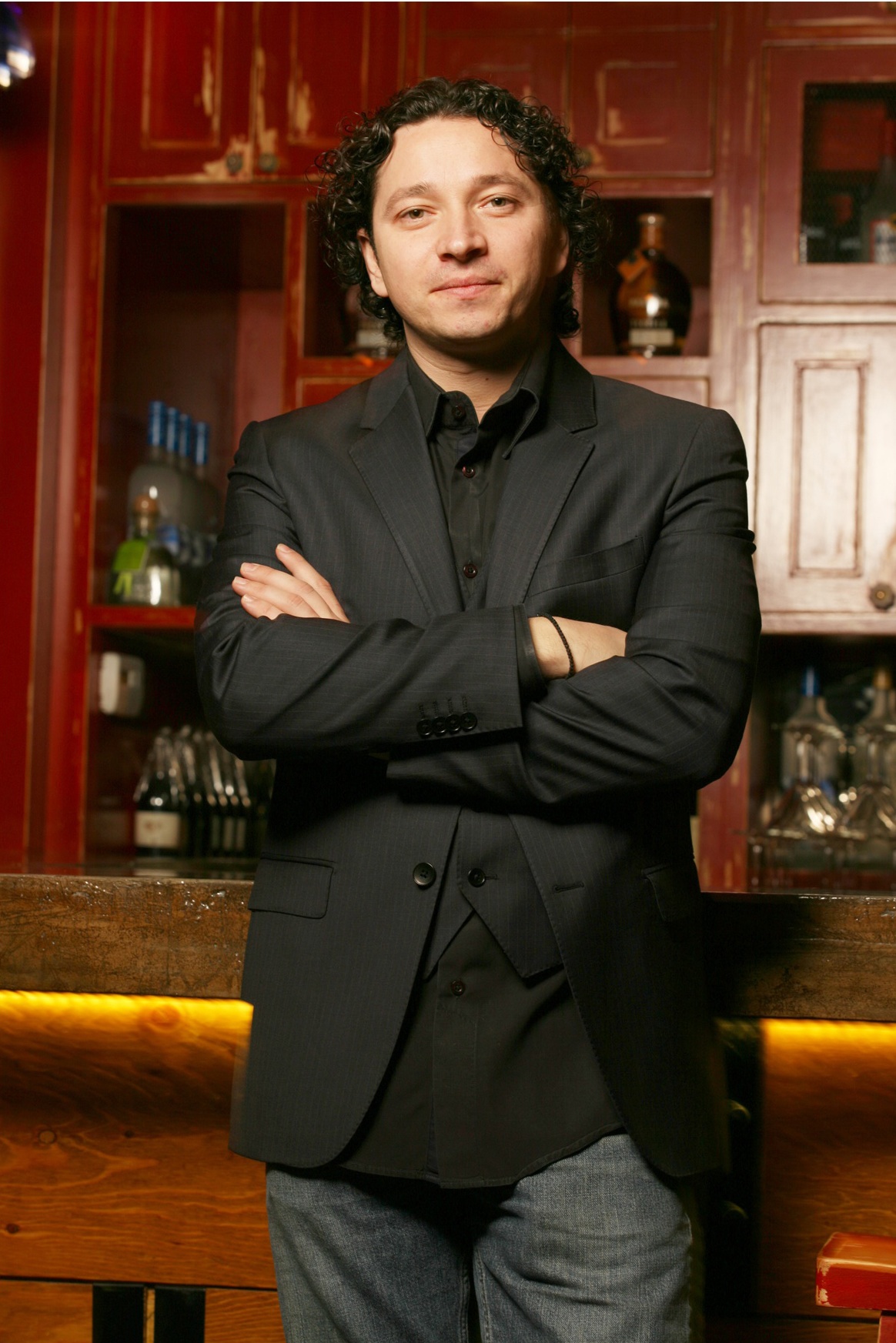 Cuba,
Spain, and the West Indies, commingled in an array of small and large
plates meant to be shared. With one of those Technicolor cocktails in
hand, start off with the malanga chips with garlic crema, tomato,
chutney, and spicy cucumber salsa to nibble on. The gilled beef
salad is, in a word, yummy, the flat
bread with smoked duck, manchego cheese and porcini spread with
sherried cherry addictive, and the baked baked curry chicken empanada with arugula
and pomegranate with pineapple
chutney will definitely be fought over at your table. Skip the anticucho of lamb and
pork belly skewers with tamarind sauce, cilantro
aïoli, and caramelized cipollini
onions, which were puzzlingly
bland.
Cuba,
Spain, and the West Indies, commingled in an array of small and large
plates meant to be shared. With one of those Technicolor cocktails in
hand, start off with the malanga chips with garlic crema, tomato,
chutney, and spicy cucumber salsa to nibble on. The gilled beef
salad is, in a word, yummy, the flat
bread with smoked duck, manchego cheese and porcini spread with
sherried cherry addictive, and the baked baked curry chicken empanada with arugula
and pomegranate with pineapple
chutney will definitely be fought over at your table. Skip the anticucho of lamb and
pork belly skewers with tamarind sauce, cilantro
aïoli, and caramelized cipollini
onions, which were puzzlingly
bland.
By all means try a ceviche (below)--both the wild striped bass
with citrus sauce, jalapeños, red
onion, passion fruit sorbet, and almond praline, and the hamachi tiradito with
yuzu crème
fraîche, aji
amarillo, pineapple
and basil, both terrific, clean-tasting, bracing. If you're
still in the mood for seafood, I highly recommend the coconut crusted
Mahi
Mahi, which comes with the wonderful addition of oxtail braised in
Rioja red wine, with shaved carrot and chayote escabeche. My favorite meat dish of
the evening was a perfectly grilled and very juicy churrasco with 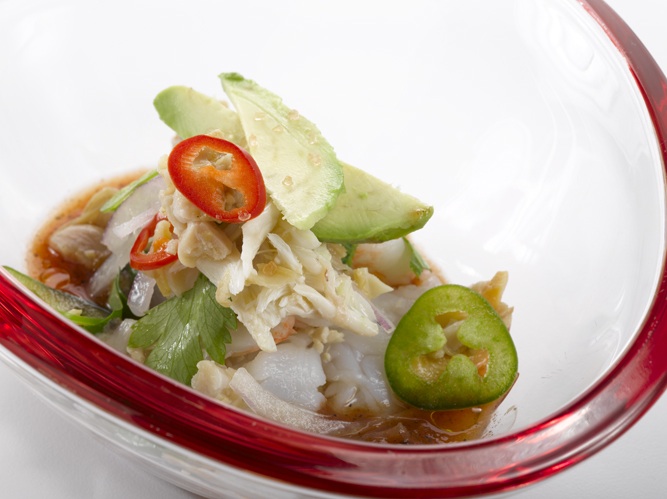 pungent chimichurri,
tangy pickled
tomato, asparagus and watercress, and the pork belly with
habanero mojo, spinach, and
chayote. Lima-style chicken, while nice and
crispy, was a little dry that evening, served with cilantro and red
onions. The Spanish fried potatoes with jalapeño, red
onions, and Idiazabal cheese is another dish you're going to have to
either battle for or order two of.
pungent chimichurri,
tangy pickled
tomato, asparagus and watercress, and the pork belly with
habanero mojo, spinach, and
chayote. Lima-style chicken, while nice and
crispy, was a little dry that evening, served with cilantro and red
onions. The Spanish fried potatoes with jalapeño, red
onions, and Idiazabal cheese is another dish you're going to have to
either battle for or order two of.
Desserts are every bit as exciting on this
tantalizing, colorful menu, including a warm chocolate cake with
vanilla ice cream, pineapple and
mango; Demerera rum-glazed banana with a crispy cookie basket with dulce de leche ice
cream; and a guava crème
brûlée cheesecake with Chilean papaya and butterscotch
sauce. I'd re-think the idea of Chef Mohan’s White Clouds" made with
basil (!) ice cream and pumpkin seed pralines.
Just reading these menu items tells you that Onda
is realizing the true modern potential of Latino food at a very
imaginative level.
That, coupled with the expertise Mohan shows in his textures and
seasonings, makes this one of the most enticing new places in New York
and a very good excuse to visit the charming Front Street area.
Onda is open Mon.-Sat.
for dinner. Small plates run $7-$12, large plates $18-$23.
~~~~~~~~~~~~~~~~~~~~~~~~~~~~~~~~~~~~~~~~~~~~
NOTES
FROM THE WINE CELLAR
California pinots may need a good
night's rest
by John Mariani
Over the last week I’ve
learned something extraordinary
about California pinot noirs: They improve with age! Oh, I don’t mean
by keeping the bottles in your cellar for the next several years. I
mean they improve overnight after you’ve opened the bottle and drunk
some of the contents.
With most wines I taste, then close—reds
like cabernets, merlots, syrahs, and just about every white, there is
no improvement in the wine; indeed, the oxygen that enters the bottle
begins immediately to deteriorate the character and quality of the
wine. (I always close a sampled bottle wine with a plastic pump-like
gadget that sucks out as much oxygen and possible before inserting a
rubber stopper.) But for reasons that escape me, several of the 20 or
so California pinot noirs I sampled, including some I didn’t much care
for, tasted not just different the next day but better.
The oft-cited problem—which many
aficionados find a great virtue—is the high alcohol level of so many
California pinots, which can make them jam-like, tasting more likes
prune juice than wine. Which is why it’s little wonder that they win
prizes over pinots from California and other countries whose alcohol
level is closer to 13.5 percent. High alcohol and big fruit
flavors can be impressive on first sniff and swirl, but they show
little of the refinement that you find in the better red Burgundies,
whose balance of fruit, acids, alcohol, and tannins provides levels of
flavor and go so splendidly with food.
For this tasting I sampled a few California
pinots up to 14.5 percent, but most were 13.5 to 14. The overnight rest
and the infusion of oxygen seemed to tame the hot blast of alcohol and
fruit in the California pinots, so that I was tasting wines 24 hours
later that had settled into better harmony.
The biggest surprise was a 2007 La Crema Anderson Valley Pinot Noir ($29),
with a whopping 14.5 percent alcohol. On first tasting, it was
curiously light in color and translucence, almost petillant. It
was very pretty, with lovely, distinct pinot flavors but an admirable
sunny California boldness too. But then it finished hot, almost
bitter. I then drank it with dinner but after one glass didn’t
want anymore.
The next day with lunch, however, the
wine had somehow become refocused, the bitterness gone, the fruit more
pronounced and is supple tandem with the light tannins. I polished it
off with real enjoyment.
La
Crema’s 2007 Los Carneros ($29) was hotter still and did not
develop much after opening, while the winery’s 2006 Sonoma Coast ($23) was lighter,
with only 13.5 percent alcohol, and good to go with food right away.
Overnight it gained in mellowness.
 Also gaining in the rest period was a Cartlidge & Browne 2006, which
was thin at first but better the next day, and at $13 a bottle a very
good buy. It would be splendid with salmon. Land’s Edge Vineyards 2006
Sonoma Coast was bigger-bodied and offered a lot of fruit but needed
more complexity.
Also gaining in the rest period was a Cartlidge & Browne 2006, which
was thin at first but better the next day, and at $13 a bottle a very
good buy. It would be splendid with salmon. Land’s Edge Vineyards 2006
Sonoma Coast was bigger-bodied and offered a lot of fruit but needed
more complexity.
Those
pinots that had some bottle age on them were of varying interest. Fess Parker 2004 ($23) from
Santa Barbara didn’t have a lot going for it, and I was very
disappointed on first sip of a lackluster Mark West 2005 ($13); the next day
it had improved at every level of flavor and refinement, with the real
taste of the pinot grape coming through beautifully.
The pinot I was most pleased with was 2005 Bearboat Russian River Valley—a
steal at $20. Sonoma’s Russian River Valley is a terroir many,
including myself, believe offers the best hope for great pinots in
California, and the Bearboat had wonderful, rich fruitiness without the
jammy quality. With just 13.5 percent alcohol, this made sense,
although it faded a little in the glass. The next day, though, it
really blossomed, with all its virtues embellished by a little oxygen.
I don’t really know why so many of these
re-stoppered wines were so improved by 24 hours of minimal exposure to
air, but it makes me think that in the future I will open my California
pinots the night before I intend to drink them. Anyway, it’s something
to sleep on.
John
Mariani's wine column appears in Bloomberg Muse News,
from which this story was adapted. Bloomberg News covers Culture from
art, books, and theater to wine, travel, and food on a daily basis, and
some of its articles play on the Saturday Bloomberg Radio and TV.
~~~~~~~~~~~~~~~~~~~~~~~~~~~~~~~~~~~~~~
 BUT
THERE ARE NOW DRUGS TO CONTROL IT
BUT
THERE ARE NOW DRUGS TO CONTROL IT
"Rio de Janeiro is one of those great
cities that works its way into
your plasma and lingers there, time and distance notwithstanding."--By
Matthew Stafford, "Soma," San
Francisco Weekly (2/10/09).
OY
VEH!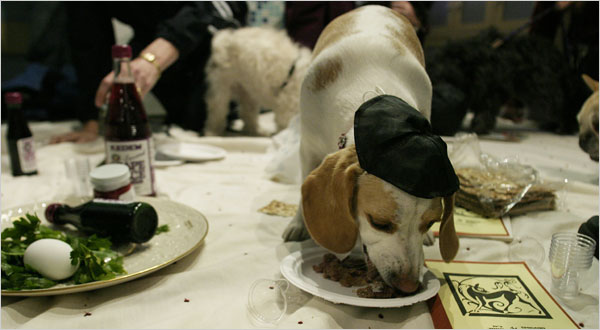
According to the NY
Times,
Robert Uri Heller, a psychologist and professor at the Adler School of
Professional Psychology, leads a "Furry Kids Passover Seder" in Chicago
this Saturday at which the guests will be dogs, to be held at
Wigglyville pet store, sponsored by Evanger’s Dog and Cat Food Company
to promote its kosher varieties, endorsed by the Chicago Rabbinical
Council. When members of his synogogue protested that such a Seder
might be sacrilegious, Dr. Heller replied, "We’re having
fun." (photo by J.
Lott, 2005) . . . . Meanwhile, NYC businessman Martin
Silver is launching a new kosher tequila called Agave 99 in time for
Cinco de Mayo. Silver told AP that a half million cases of the 99-proof
kosher tequila ($41.95) are being made in Mexico using methods
certified by a rabbi.
~~~~~~~~~~~~~~~~~~~~
*
In Charlottesville, VA,
Amy Lewis, Keswick Hall’s Head
Gardener is offering a “From the Garden to the Table” package –a class
on the important nuances of spring pruning followed by a fresh lunch in
the Villa Crawford. This 2 night package also incl. accommodations,
breakfast, dinner Fossett’s, and a garden tour of Monticello. Rates
begin at $813, available thru May 31, Call 1-800-274-5391 or
visit www.keswick.com.
* The Palm Restaurant Group announce their “Spring Dining Stimulus Plan” with an all-new Business Lunch Menu and $39 Biggest Steak dinner, available at Palm Restaurants nationwide. through May 31. Visit www.thepalm.com.
* On April 17, "Springtime in Paris" takes place in Orlando at Rosen Centre hotel's Everglades Restaurant, with its 2009 "Vine and Dine" Series-- a 5-course Parisian-inspired menu with French wines. $65 pp. Call 407 -996-8560; visit www.evergladesrestaurant.com or www.rosencentre.com.
*
In Nantucket, MA, American Seasons Executive Chef
Michael LaScola and General Manager/Sommelier Orla Murphy-LaScola
celebrate the restaurant’s 21st anniversary with a $20 entrée
menu and its “American Bistro” menu. Call 508-228-7111 or online
at www.americanseasons.com.
*
On April 25 NYC’s Benoit will hold a “Taste of
Rosé,” 20+ French rosé wines with charcuterie. $35. Call
646-943-7373.
*
From April 13-17 in Washington,
D.C., Asia Nine
celebrates Songkran, the Thai New Year, with a special menu designed to
capture the holiday’s spirit of cleansing and renewal. Call
202-629-4355 or go to www.asianine.com.
*
On April 16 in Charlotte, NC,
Southpark's Upstream Restaurant will
host a 5-course wine dinner by Executive Chef Tom Condron and Chef de
Cuisine Scott Wallen. celebrating Nickel & Nickel Vineyards.
$95 pp. In addition, guests attending the wine dinner will be given a
$25 Upstream gift certificate to use on a future visit. 704-556-7730;
www.upstreamseafood.com.
*
On April 19 in Miami,
Heart of a Chef Festival
to benefit the Florida Heart Research Institute, will be a family
friendly day, in the Tree Top Ballroom at Jungle Island; $25 for
adults, $10 for children. Celebrity Chef Cook-off ; Wine Seminars;
Kid’s Demo and Chef’s Interactive; Call 305.674.3020 or visit
www.heartofachef.org. . . . On April 25 in Miami, Driven to Dine, also to benefit the
Florida Heart Research Institute, takes place. Priced at
$5,000 per limo, attendees begin with a reception at NFL Coach Don and
wife Mary Anne Shula’s Indian
Creek home, draw envelopes that determine their destined restaurants,
incl. Chef Sean Brasel/Meat Market, Peter Vauthy/RED the
Steakhouse, Patrick Boucher/Acqua at the Four Seasons, Dale
Ray/Casa Casuarina, Gaetano Ascione/Gaia Ristorante,
Giancarla Bodoni/Escopazzo, Kurtis Jantz/Neomi’s at the Trump
International, Sean Bernal/Oceanaire, Odel Arencibia/ The Capital
Grille, Virgile Brandel/Gia-Italian Kitchen & Wine Bar at the Eden
Roc, John Critchley/Area 31, and Jonathan Wright/The Setai. Call
305-674-3020 or visit www.heartofachef.org.
*
From April 18-22 Pizza Fusion on
North Miami Beach, FL,
celebrates Earth Week with family festivities, incl. free pizza,
Honest Tea giveaways and raffle drawings for Jamis bicycles, a ‘Green
Home Makeover,’ a trip to wine country, a Sierra Club Excursion
Vacation, et al. Visit:
www.pizzafusion.com.
*
On April 22 in National Harbor, MD,
Old Hickory Steakhouse’s
Wine Dinner Series will hold the Dr. Loosen Wine Dinner from
Germany’s Mosel Valley with cuisine by Chef Wolfgang Birk welcoming
Ernst Loosen, head of the Dr. Loosen Estate. $95 pp. Call 301-965-2718.
*
On April 22 Il Buco in NYC will hold its Second Annual
Earth Day Fund-Raiser to Protect the Amazon Rainforest, by reducing
customers' total lunch bill by 15% for one week and donate the
15% saved by its guests. Call 212-533-1932; visit www.ilbuco.com.
*
From April 27-May 3 in Atlanta,
Highland Tap celebrates
its 20th Anniversary with Chef Bert Chapman featuring $20 signature
dishes and $20 wine pairings. Visit
www.highlandtapatlanta.com.
*
Beginning April 30, NYC’s Hearth and Insieme present their Spring Series
of Wine Dinners with wine Directors Paul Grieco (Hearth) and Greg
Majors (Insieme). 4-course dinner. Cal; 646-602-1300.
Everett Potter's Travel Report:

~~~~~~~~~~~~~~~~~~~~~~~~~~~~~~~~~~~~~~~~~~~~~~~~~~~~~~~~~~~~~~~~~~~~~~~~~~
Eating Las Vegas is the new on-line site for Virtual Gourmet contributor John A. Curtas., who since 1995 has been commenting on the Las Vegas food scene and reviewing restaurants for Nevada Public Radio. He is also the restaurant critic for KLAS TV, Channel 8 in Las Vegas, and his past reviews can be accessed at KNPR.org. Click on the logo below to go directly to his site.
~~~~~~~~~~~~~~~~~~~~~~~~~~~~~~~~~~~~~~~~~~~~~~~~~~~~~~~~~~~~~~~~~~~~~~~~~~~
Tennis Resorts Online: A Critical Guide to the World's Best Tennis Resorts and Tennis Camps, published by ROGER COX, who has spent more than two decades writing about tennis travel, including a 17-year stretch for Tennis magazine. He has also written for Arthur Frommer's Budget Travel, New York Magazine, Travel & Leisure, Esquire, Money, USTA Magazine, Men's Journal, and The Robb Report. He has authored two books-The World's Best Tennis Vacations (Stephen Greene Press/Viking Penguin, 1990) and The Best Places to Stay in the Rockies (Houghton Mifflin, 1992 & 1994), and the Melbourne (Australia) chapter to the Wall Street Journal Business Guide to Cities of the Pacific Rim (Fodor's Travel Guides, 1991).

Family Travel
Forum: The
Family Travel Forum (FTF), whose motto is "Have Kids, Still Travel!",
is dedicated to the ideals, promotion and support of travel with
children. Founded by business professionals John Manton and Kyle
McCarthy with first class travel industry credentials and global family
travel experience, the independent, family-supported FTF will provide
its members with honest, unbiased information, informed advice and
practical tips; all designed to make traveling a rewarding, healthy,
safe, better value and hassle-free experience for adults and children
who journey together. Membership in FTF will lead you to new worlds of
adventure, fun and learning. Join the movement.
All You Need to Know Before You Go
~~~~~~~~~~~~~~~~~~~~~~~~~~~~~~~~~~~~~~~~~~~~~~~~~~~~~~~~~~~~~~~~~~~~~~~~~
MARIANI'S VIRTUAL GOURMET NEWSLETTER is published weekly. Editor/Publisher: John Mariani.
Contributing Writers: Robert Mariani,
John A. Curtas, Edward Brivio, Mort
Hochstein, Suzanne Wright, and Brian Freedman. Contributing
Photographers: Galina Stepanoff-Dargery, Bobby Pirillo. Technical
Advisor: Gerry McLoughlin.
Any of John Mariani's books below
may be ordered from amazon.com by clicking on the cover image.
 My
newest book, written with my brother Robert Mariani, is a memoir of our
years growing up in the My
newest book, written with my brother Robert Mariani, is a memoir of our
years growing up in the For those of you who don't think of the Robert and I think you'll enjoy this very personal look at our --John Mariani |
 |
 |
 |
 |
 |
 |
© copyright John Mariani 2009
